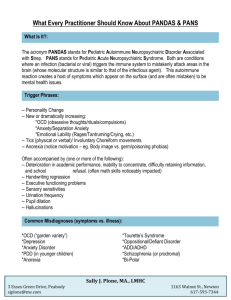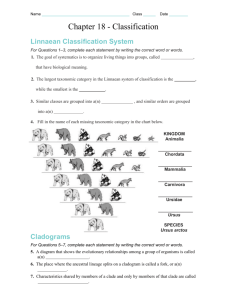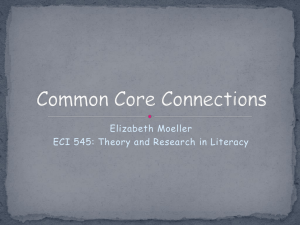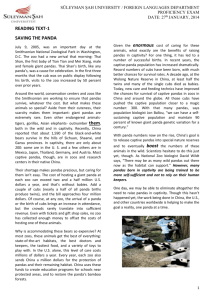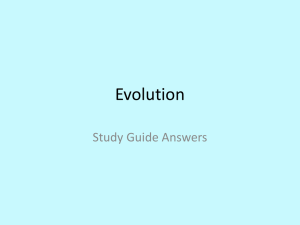Newsletter-March-2010
advertisement
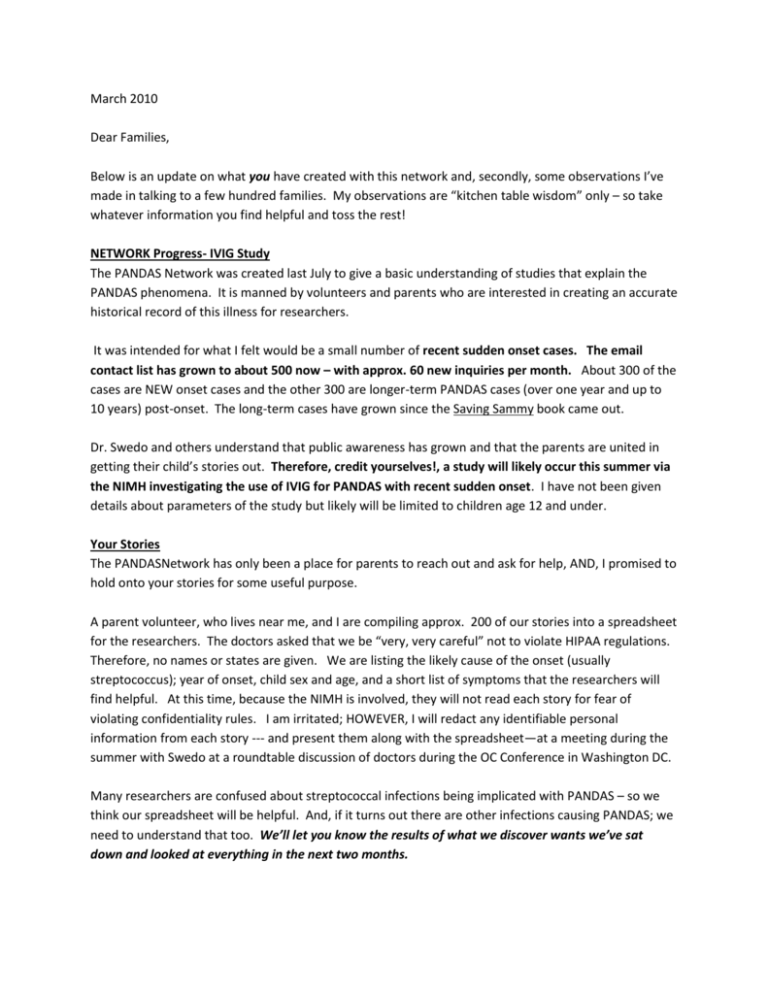
March 2010 Dear Families, Below is an update on what you have created with this network and, secondly, some observations I’ve made in talking to a few hundred families. My observations are “kitchen table wisdom” only – so take whatever information you find helpful and toss the rest! NETWORK Progress- IVIG Study The PANDAS Network was created last July to give a basic understanding of studies that explain the PANDAS phenomena. It is manned by volunteers and parents who are interested in creating an accurate historical record of this illness for researchers. It was intended for what I felt would be a small number of recent sudden onset cases. The email contact list has grown to about 500 now – with approx. 60 new inquiries per month. About 300 of the cases are NEW onset cases and the other 300 are longer-term PANDAS cases (over one year and up to 10 years) post-onset. The long-term cases have grown since the Saving Sammy book came out. Dr. Swedo and others understand that public awareness has grown and that the parents are united in getting their child’s stories out. Therefore, credit yourselves!, a study will likely occur this summer via the NIMH investigating the use of IVIG for PANDAS with recent sudden onset. I have not been given details about parameters of the study but likely will be limited to children age 12 and under. Your Stories The PANDASNetwork has only been a place for parents to reach out and ask for help, AND, I promised to hold onto your stories for some useful purpose. A parent volunteer, who lives near me, and I are compiling approx. 200 of our stories into a spreadsheet for the researchers. The doctors asked that we be “very, very careful” not to violate HIPAA regulations. Therefore, no names or states are given. We are listing the likely cause of the onset (usually streptococcus); year of onset, child sex and age, and a short list of symptoms that the researchers will find helpful. At this time, because the NIMH is involved, they will not read each story for fear of violating confidentiality rules. I am irritated; HOWEVER, I will redact any identifiable personal information from each story --- and present them along with the spreadsheet—at a meeting during the summer with Swedo at a roundtable discussion of doctors during the OC Conference in Washington DC. Many researchers are confused about streptococcal infections being implicated with PANDAS – so we think our spreadsheet will be helpful. And, if it turns out there are other infections causing PANDAS; we need to understand that too. We’ll let you know the results of what we discover wants we’ve sat down and looked at everything in the next two months. As you remember, Dr. Swedo and/or Dr. Tanya Murphy were interested in reviewing our stories….but it hasn’t happened yet – I’ll keep bugging them. I am slowly realizing that time and money for research is difficult, difficult to find. And Dr. Swedo has worked hard in the last few months writing the NIMH Study and other PANDAS articles. OBSERVATIONS--- “Kitchen Table Wisdom” My scope of experience (my own son and over a dozen local cases in California) has focused only on PANDAS being an illness with recent, overnight, sudden onset of ocd, anxiety, tics, chorea, etc. Since the “Saving Sammy” book has come out – many parents have been coming to the Latitudes forum and to my small website with long-term, untreated PANDAS cases. And, some parents who have children who have had low-level tics or ocd for many years are suspecting PANDAS-like issues. So, clearly this can confuse conversations. A word of caution: These long-term cases and possible treatments are not understood well yet. The consequences of being untreated for many years is unknown. PLEASE know who you are talking to on the forum and understand the nuances of your child’s case when comparing to others. I still think picking up the darned phone and talking to a parent is the best way to clarify your ideas. GOOD TRENDS I’M SEEING WITH FAMILIES POST-TREATMENT ONE YEAR Out of 60 families I’ve loosely followed in the last year most are greatly improved if not “all better.” Most of us think there might be tiny hints here or there? But the children seem symptom free and functioning happily without apparent PANDAS issues. These were all cases where treatment was given within approx. one year of initial onset usually caused by strep or suspected strep illness that was undocumented. 20 children: received one IVIG or Plasmaphoresus: these children seem to have unremarkable medical histories and prior to Pandas seem in relatively good health. It took 3 mos. for good cessation and one year for full remission. 20 children: used a daily treatment dose of antibiotics (sometimes combined with short-term steroids) (Penicillin, Augmentin, Azithro, Keflex, etc): these children tend to be younger (age 3 to 7) and are in relatively good health. Some of these children are having minor re-exacerbations and some none whatsoever. 20 children: had to do at least 2 IVIG’s, PEX followed by IVIG, and/or combination of antibiotics or other measures to arrest symptoms: these children tend to have had considerable ill health prior to PANDAS (repeated ear, sinus, strep infections with complications) OR it was found that other family members were untreated carriers of strep and the children were unknowingly re-exposed. In this group of 20, there are 2 that are not out one year but are clearly relapsing – tics are the major presentation. We are not clear why but the parents and doctors are working really really hard to understand why LONG-TERM CASES Incidentally, I do know of 5 long-term (untreated for over 5 years) PANDAS families that are post-ivig or Plasmaphoresus treatment between 3 and 6 months and the children who have struggled for many years, are much much better and the family and child is really pleased with the results. There are 3 women over 21 who have reported having had PANDAS as children. Two of them still struggle with strep issues and exacerbated going off antibiotics --- so they remain on prophylactic antibiotics. The prognosis according to Swedo and others, still seems likely to be good and be largely a pediatric illness. STEADY TRUTH’S I’M HEARING FROM FAMILIES POST-IVIG or PEX Our children have had brain-nerve inflammation problems AND an “inflamed” autoimmune system. The first year recovering from whatever treatment is used, the child is delicate. Any infections (tooth, colds, flu, upper respiratory issues) --- the families need to be very careful and monitor hints of an exacerbation in that first year of convalescing. Increasing the antibiotic level for a few weeks or a short steroid treatment stops exacerbations. After treatment at about week 6 the child has a deeper improvement. Each month following is greater improvement and the progress will be noticeable. If there is a sustained setback after the first two or three months re-treatment probably needs to occur. BASIC PRINCIPLES POST-TREATMENT ONE YEAR OUT High dose antibiotics Saving Sammy style act as a “faux” autoimmune modulating drug. It is calming the inflamed immune system. It seems to help families within one year; low level symptoms sometimes remain and sometimes not. IVIG treatment - this is very commonly used for both autoimmune illnesses and encephalitis cases. For children who are suffering acutely—the choice is obvious. The higher dose (as Dr. Kovacevic or Dr. Swedo have used) seems to be better perhaps in part because the donor T & B cells can rapidly overwhelm the misbehaving auto-antibodies. The principle is widely known amongst Neurologists and Immunologists dealing with more life-threatening illnesses than PANDAS. IVIG is not a dangerous procedure. Plasmaphoresus -- this is used for Sydenham Chorea and rare autoimmune illnesses (like Devic’s Disease) amongst other things and rapidly removes the offending auto-antibodies. For children who are suffering acutely—this is a treatment with rapid results. There are several PANDAS families who have done the treatment with success but they too need to be careful post-treatment as the immune system is still reactive. Some families have had to follow with IVIG to boost the child’s immune process and this has been helpful. Prednisone – during the year following treatment a short-course sometimes is used by a doctor to tame a noticeable flare-up, just as in severe asthma cases. Lastly, it does seem like different serotypes of strep (like M1 or M18) are harder to eradicate OR they just inflame the immune process more deeply so more antibiotics need to be used. None of the experts are certain yet. But the child should no matter what – improve to some degree on antibiotics if this it is PANDAS. Genetics – Over 50% of the 200 families mention some medically diagnosed mental illness in first or second generation. Over 50% of the 200 families mention some type of autoimmune illness. Comorbid Infections or Illnesses – The fact is most of the kids have weakened immune systems so it may be complicated slowing symptoms. Doing a good immune workup is always sound advice. Some of the children have had severe tummy issues for a long-time and this needs to be paid attention to by medical professionals! A few children have had C-Diff or are very immune compromised. MY CHILD’S EXAMPLE – What NOT to do and What is Good to Do AND Another Girl Cured at age 9 Now Age 17 My son is Case #1 on the website. He is finally recovered and I hope it remains so but am cautious. I wanted to add a few things that might help you: My son is the 1/3 of kids above that needed a 2nd IVIG. He had a long history since age 2 of intermittent high fevers, leg pains, inflamed tonsils, asthma, allergies but never a strep infection. His immune system was wiped out. We did our first IVIG with Dr. Kovacevic in Sept. 2008 after one year of daily antibiotics (see the graph in the case history) and he still intermittently suffered chorea, ocd, anxiety when exposed to strep microbially. We did the IVIG because the antibiotics were not enough—clearly. His ASO and D-NASE were approx. 500. He seemed better nearly immediately post-first-IVIG – coloring, coughs, overall weakness, attitude improved. However, after 3 mos. his PANDAS symptoms returned by about 50%; his overall physical health seemed excellent, no coughs or colds or allergies remained. He was also exposed post-IVIG each and every month to bad cases of strep through a friend we discovered was a carrier. system was just not strong enough to sustain a PANDAS remission. His immune By May 2009 (eight months later) we did a second IVIG and he repaired rapidly. Within 3 months he seemed entirely mentally whole again. His ASO and D-NASE have fallen to approx. 100. His CamKinase post-second IVIG was initially April 2009 (145 but muted by prednisone so likely above this by 20 to 40 points): 3 months-post-IVIG (165 CamKinase); 6 months post-IVIG (102 CamKinase). Dr. Cunningham’s test indicates at the very least a dramatic quieting of the autoimmune system. We kept him close to home during the summer so he wouldn’t get exposed to new illnesses. In the year post-ivig he, like many other children, had mild reactivity to other illnesses. One time, in response to his kindergarten sibilings’ Fifths Disease infection I gave him a short course of steroids and doubled on antibiotics for 10 to 30 days to quiet a minor uptick in symptoms I saw for about one week. He seems PANDAS free now; but like any autoimmune illness – I’m watching him like a hawk. OTHER GIRL “Cured” Now Age 17 I recently met a girl who had been treated 10 years ago for PANDAS. She had IVIG (2G/1kg) and had gradual improvement. From Kindergarten to 2nd Grade she had ocd, anxiety, hyperactivity, chorea, etc etc. She had a special IEP for school and would often run out of the playground to the street. She could do little schoolwork. By the time she entered 4th Grade, she told me PANDAS was a distant memory and still is – though her mother shook her head, “I’ll never forget.” The girl is 17 years old now, and like Sammy, on her way to college. She received IVIG in 2nd grade and sure enough, the mother and daughter concurred, it took one year for GREAT improvement. By the end of the 2nd year post-ivig – she was 100%. Final Thoughts I hope this was helpful. Most of us in this network are new cases or recently recovering. The Trauma of PANDAS is something that is hard to articulate. I hope everyone finds one friend in this network, we’re glad to help you if you need that, that you can confide in. Many mothers want to start a non-profit or a community awareness program – I am sure someone will be successful in doing so and that over time our voices will be united and will move the doctors forward. Best wishes, Diana Pohlman
